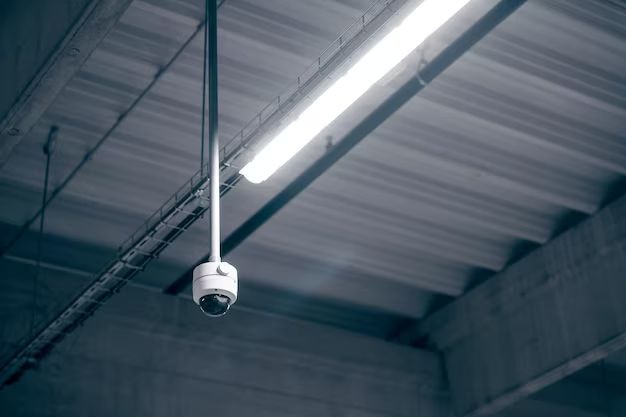Motion sensors are a convenient way to automatically turn lights on and off based on occupancy in a space. They can help save energy since the lights turn off when no motion is detected after a set time period. Fluorescent lights are a common type of lighting used in commercial and industrial settings due to their energy efficiency and long life. But will a motion sensor work properly with fluorescent lights? There are a few things to consider when using motion sensors with fluorescent lighting.
Page Contents
How do motion sensors work?
Motion sensors detect occupancy and movement in a space using passive infrared (PIR) technology. PIR sensors can detect changes in infrared energy that occur when a person or object crosses their field of view. When motion is detected, the sensor sends a signal to turn lights or other devices on. After a set time with no motion detected, the sensor will then signal the lights to turn back off.
The sensitivity of PIR motion sensors is adjustable, with detection ranges from 10-20 feet being common for indoor lights. The field of view or detection pattern is also adjustable, with options like 180 degree or 360 degree detection available. So the coverage area of the motion sensor can be customized as needed.
Challenges of using motion sensors with fluorescent lights
While motion sensors are commonly used with incandescent and LED bulbs, there are some unique challenges when pairing them with fluorescent lighting:
Delayed startup
Fluorescent lights have a warm up period before reaching full brightness that is longer than incandescent bulbs. This warm up or start up delay ranges from 1-2 seconds for more efficient, premium fluorescent tubes up to 10+ seconds for older tubes. The motion sensor may turn the lights off before they reach full brightness if the time delay is not accounted for.
Frequent switching
Frequent switching on and off can shorten the life span of fluorescent lights more than incandescent bulbs. The repeated striking of the arc inside the tube causes additional wear. For high traffic spaces where the sensor will be frequently triggered, fluorescent light life may be reduced.
False triggers
Fluorescent lighting gives off electromagnetic interference that may cause false triggers of the motion sensor. The interference can make the sensor think motion is occurring when the room is actually vacant. This can defeat some of the expected energy savings from the motion-activated lighting.
Compatibility
Not all fluorescent light ballasts and motion sensors are compatible. Ballasts that are not designed for use with motion sensors may result in flickering or lights not turning on properly in response to the sensor. Checking manufacturer specs to ensure compatibility is important.
Tips for successful motion sensor installation with fluorescent lights
Despite these potential issues, motion sensors can still be effective for fluorescent lighting if set up correctly:
Choose compatible ballasts and lamps
Selecting fluorescent ballasts designed for use with occupancy sensors will provide optimal performance and compatibility. Check that the ballast does not exceed the maximum load rating for the motion sensor controls. Using high quality, name brand fluorescent tubes also helps minimize startup delay and false triggering issues.
Increase time delays
Adjusting settings to increase the time delay before the lights turn off to at least 5-10 minutes allows fluorescent tubes to fully reach their brightness level before potentially shutting off. A longer delay also allows for intermittent traffic where the sensor is triggered again before shutting off.
Careful placement
Positioning the motion sensor to avoid detecting unnecessary motion like hallways or outside traffic will help reduce false triggers. Placing it above or outside the light fixture helps prevent interference from the fluorescent lamps as well. Proper placement helps the sensor detect true occupancy of the intended area.
Manual override
Including a manual override switch allows the lights to be turned on directly, bypassing the motion sensor. This can be used if issues occur with the motion control functioning properly. A manual override gives more lighting control options.
Group similar fixtures
Wiring multiple fluorescent fixtures in the space to the same sensor zone helps minimize the frequency of turning on and off cycles. The entire zone turns on and off together, extending the life of the bulbs.
Consider hybrid approach
For large spaces a split setup combining motion sensors and timers may be optimal. Timers can control banks of fluorescent fixtures operating all day, while key areas use motion activated fluorescence for even greater energy savings.
Examples of motion sensors that work with fluorescent lighting
Many models of motion sensor lighting controls are designed to be compatible with fluorescent bulbs and ballasts:
Lutron Maestro Motion Sensor Switch
– Wide 180 degree field of view with XCT detection technology
– Adjustable time delay up to 30 minutes
– Compatible with dimmable and non-dimmable fluorescents
– Manual dimming control also built in
Hubbell ATP1200W Dual Tech Occupancy Sensor
– Uses both passive infrared and ultrasonic detection
– Resistant to false triggers
– Models available for fluorescent ballasts up to 6 amps
– At least 50,000 hour lifespan
Leviton ODS10-IDW Motion Sensor
– Detects even subtle motion with microprocessor signal analysis
– Filters ambient RF noise interference
– Switch rated for most fluorescent ballasts
– 10 year lifespan with trouble-free limited warranty
Conclusion
In summary, motion sensors can work effectively with fluorescent lighting with proper selection, placement and settings adjustments. Features like time delays, hybrid controls and careful positioning help mitigate issues like delayed startup, false triggers and interference. Matching compatible ballasts and lamps prevents flicker or control malfunctions. With strategic setup, motion sensors reliably deliver energy savings and convenience with fluorescent bulbs. Reaching out to manufacturers helps ensure you choose models designed for optimal fluorescent performance.
